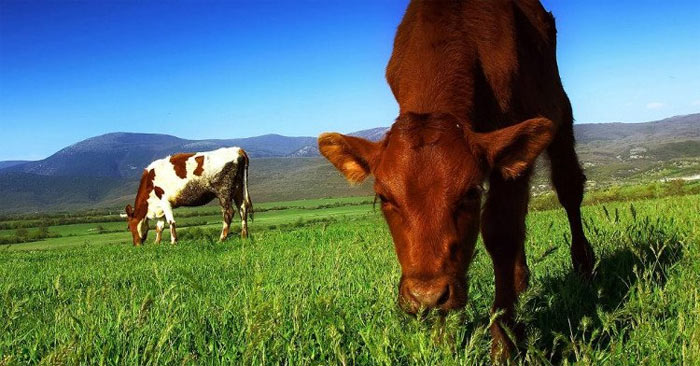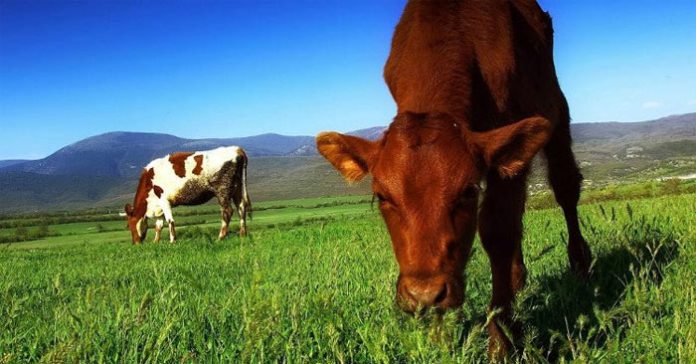Why do cattle eat grass and still get fat? Why do grass-fed cows get fat? Let's find the answer together!
We humans have to eat a lot of things to ensure adequate nutrients for our bodies, but cattle only need to eat grass and still live well, even fat. Why so?
Biologically, herbivores possess a digestive system adapted to eating grass, so they only need to eat grass to survive, including fresh grass and dry grass.

Cattle do not have upper jaws, so they can only use their tongues to push grass into their mouths, then use their jaws to gnaw off the grass and then swallow it. This grass will be stored in the rumen compartment.
Cattle are ruminants, so their stomachs have a special structure, with 4 compartments. The size of the rumen in adults accounts for more than 80% of the stomach, so its capacity is very large, up to 200 liters. When finished eating, cattle will lie down to rest and push the grass in their rumen up to chew again.
Thanks to the special structure of the stomach, ruminants can digest cellulose, the main component of plant cell walls, which the human stomach cannot digest. Microorganisms in the rumen of cattle can break down the chemical structure of cellulose to “synthesize” into many other nutrients.
The beneficial bacteria in the stomachs of cattle and buffaloes also help them digest agricultural by-products such as rice husks, hay, grain husks…
Grass is mostly water, but inside its dry surface, there are water-soluble carbohydrates, proteins, fiber, oils, minerals and vitamins. So this is the complete diet: everything the cow needs is in the grass. What's more – it's also supported by a special combination of four powerful stomach and intestinal bacteria.
To enhance the benefits of the diet, many cattle farmers try to grow as much white clover as possible in the paddock (the top layer of soil covered with grass) to provide protein for the cattle. Furthermore, the nitrogen fixed by clover from the air into the soil helps promote more energy-rich, sugary grasses such as ryegrass – improving overall pasture productivity and overall digestibility of the lawn.
The oils in grass contain polyunsaturated fatty acids (PUFA), which are assimilated into the meat of livestock and are healthy to eat. These are Omega-3 and Omega-9 if you don't know.
In short, cattle only need to eat vegetables and can still be fat, all thanks to the structure of their stomach and the beneficial bacteria in their digestive tract.


